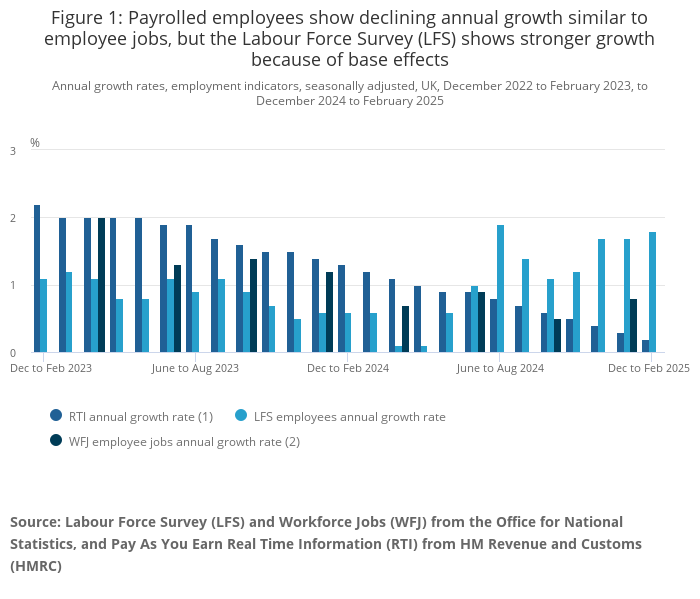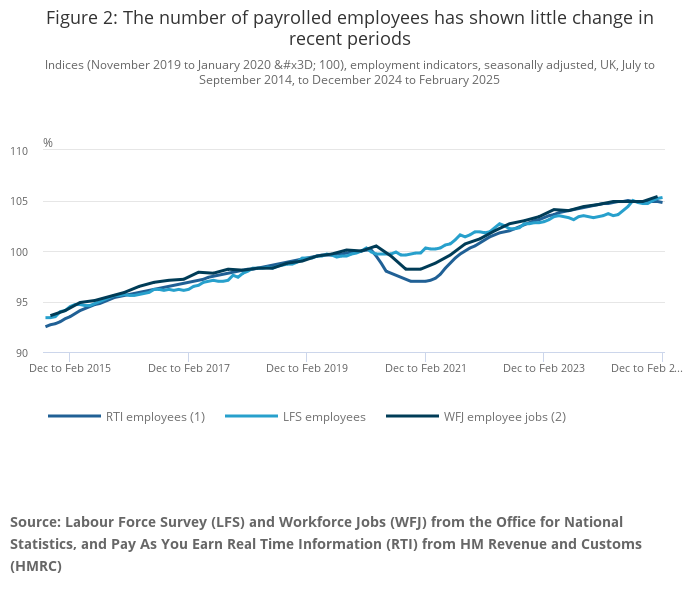UK labour market shows signs of cooling amid strong wage growth
The UK’s labour market exhibited signs of deceleration in early 2025, according to the latest data released by the Office for National Statistics (ONS) on April 15. While wage growth remained robust, indicators such as employment levels and job vacancies pointed towards a potential slowdown.
Employment Trends
In March 2025, the number of payrolled employees in the UK decreased by 78,000, marking the most significant monthly decline since the COVID-19 pandemic. This followed a revised decrease of 8,000 in February. Despite these reductions, the unemployment rate held steady at 4.4%.
Wage Growth
Average weekly earnings, excluding bonuses, increased by 5.9% in the three months to February 2025 compared to the same period a year earlier. This growth was slightly above the 5.8% recorded in January. Including bonuses, wage growth remained at 5.6%. Public sector pay was a significant contributor to this increase, while private sector wages showed relative stability.
Job Vacancies
The number of job vacancies fell by 22,000, bringing the total below pre-pandemic levels for the first time since mid-2021. This decline suggests a cooling in the demand for labour across various sectors.
Economic Outlook
The combination of strong wage growth and declining employment indicators presents a complex scenario for policymakers. While higher wages can boost consumer spending, they may also contribute to inflationary pressures. The Bank of England faces the challenge of balancing these factors as it considers future interest rate decisions.
Additionally, upcoming changes such as increases in employer national insurance contributions and the national living wage are expected to impact employment costs. These factors could influence hiring decisions and overall labour market dynamics in the coming months.
The ONS has acknowledged concerns regarding the accuracy of its labour market data, citing declining response rates to its surveys. Efforts are underway to implement a Transformed Labour Force Survey (TLFS) to enhance data quality, with full implementation anticipated by 2027.
As the UK navigates these labour market developments, close monitoring of employment trends and wage dynamics will be crucial in informing economic policy and ensuring sustainable growth.










